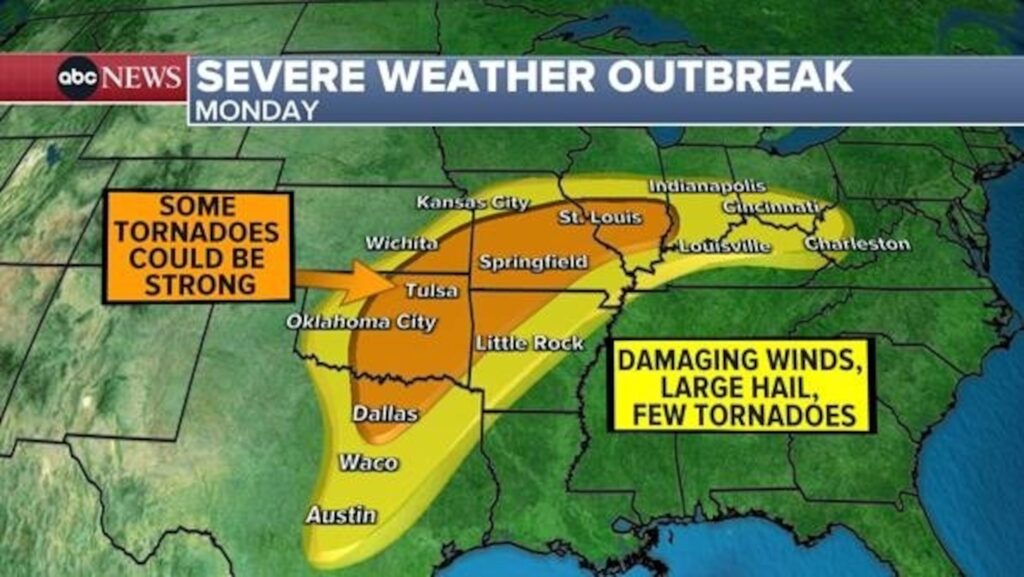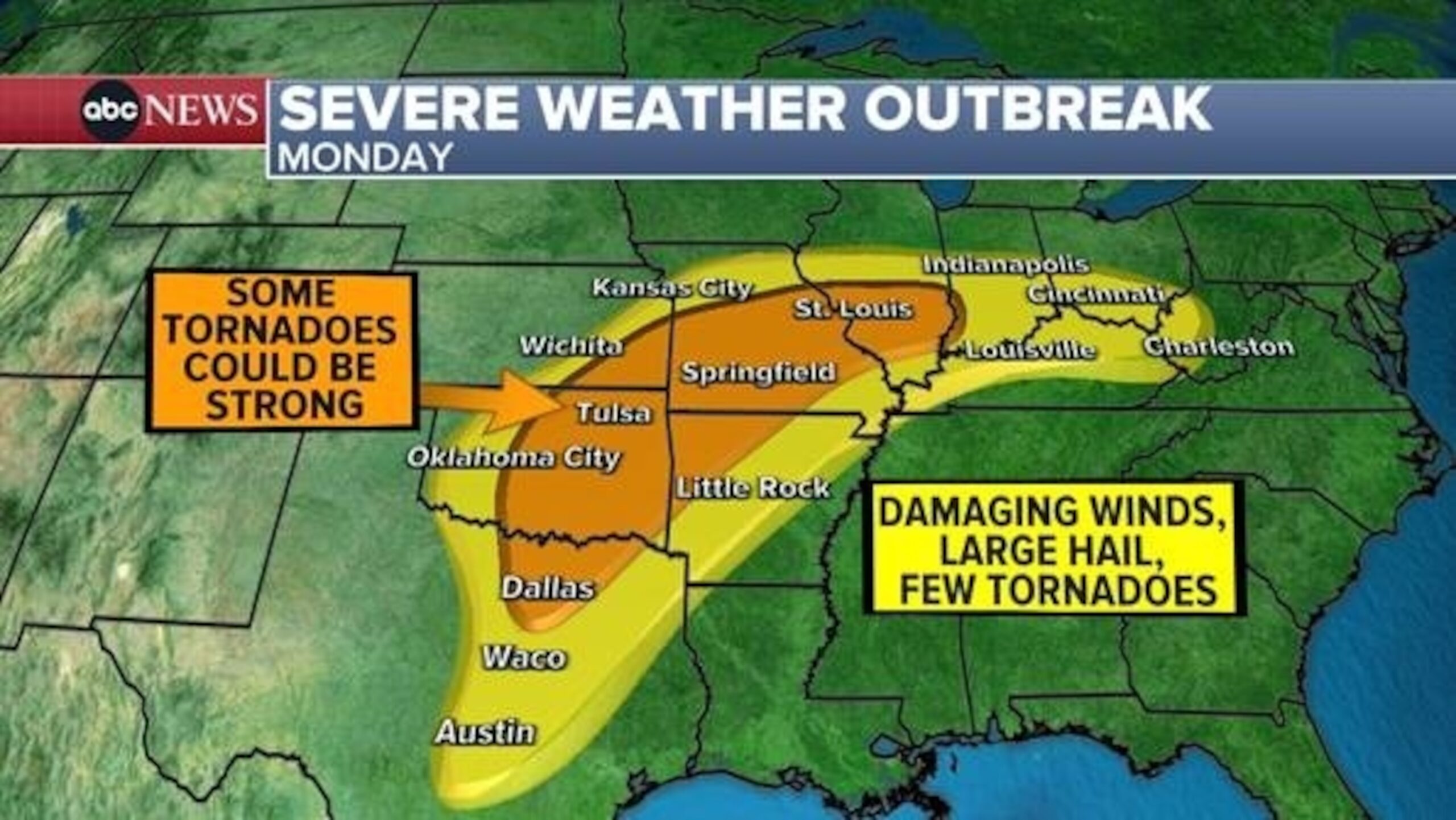
Decoding the Severe Weather Outlook: A Comprehensive Guide
Understanding the severe weather outlook is crucial for protecting yourself, your family, and your property. In an era of increasing climate volatility, staying informed about potential weather threats is no longer a luxury but a necessity. This comprehensive guide will delve into the intricacies of severe weather outlooks, providing you with the knowledge and tools to interpret forecasts, understand potential risks, and take proactive measures. We aim to provide a deeper understanding than you’ll find anywhere else, drawing on expert knowledge and real-world scenarios to make you a more informed and prepared individual.
Understanding the Nuances of Severe Weather Outlooks
A severe weather outlook is more than just a prediction; it’s a complex assessment of atmospheric conditions that could lead to hazardous weather events. These outlooks, typically issued by meteorological agencies like the National Weather Service (NWS) in the United States, provide a forecast of potential severe weather over a specific period, ranging from a few hours to several days. The key is understanding the different levels of risk and what they mean for your location.
The evolution of severe weather forecasting has been remarkable. Early attempts relied on simple observations and rudimentary tools. Today, sophisticated computer models, satellite imagery, and radar technology provide forecasters with a wealth of data to analyze. These advancements have significantly improved the accuracy and lead time of severe weather outlooks, giving communities more time to prepare.
At its core, a severe weather outlook considers several key atmospheric ingredients: moisture, instability, lift, and wind shear. Moisture provides the fuel for thunderstorms, instability allows air to rise rapidly, lift initiates the upward motion, and wind shear can organize thunderstorms and make them more severe. The interplay of these factors determines the likelihood and intensity of severe weather.
Severe weather outlooks are not guarantees. They represent the probability of severe weather occurring within a defined area. Forecasters use terms like “slight risk,” “enhanced risk,” “moderate risk,” and “high risk” to communicate the level of threat. A “slight risk” indicates that severe weather is possible, while a “high risk” signifies a significant threat with widespread severe weather expected.
The National Weather Service and Severe Weather Prediction
The National Weather Service (NWS) plays a pivotal role in issuing severe weather outlooks in the United States. Its Storm Prediction Center (SPC) is responsible for forecasting severe thunderstorms and tornadoes across the country. The SPC uses a combination of weather models, observational data, and expert analysis to produce accurate and timely outlooks. Here’s how they contribute:
- Data Collection and Analysis: The SPC gathers data from various sources, including weather satellites, radar systems, surface observations, and weather balloons. This data is analyzed to identify areas with favorable conditions for severe weather development.
- Model Interpretation: Weather models are used to predict future atmospheric conditions. The SPC’s meteorologists interpret these models, considering their strengths and weaknesses, to create a forecast of potential severe weather.
- Outlook Issuance: Based on their analysis, the SPC issues severe weather outlooks that outline the areas where severe weather is most likely to occur. These outlooks include information on the timing, location, and potential intensity of the expected severe weather.
- Public Communication: The SPC communicates its forecasts to the public through its website, social media channels, and partnerships with local media outlets. This ensures that people have access to the information they need to stay safe.
Key Features of a Reliable Weather App for Severe Weather Awareness
In today’s digital age, weather apps have become indispensable tools for staying informed about severe weather risks. But not all weather apps are created equal. A reliable weather app should offer several key features to ensure you receive accurate and timely information:
- Real-Time Radar: A high-resolution radar map that shows the location, movement, and intensity of precipitation is essential. Look for apps that offer customizable radar layers, allowing you to view different types of weather data, such as storm tracks, lightning strikes, and hail potential.
- Customizable Alerts: The ability to set custom alerts for specific locations and weather conditions is crucial. You should be able to receive notifications for severe thunderstorm warnings, tornado warnings, flash flood warnings, and other hazardous weather events.
- Detailed Forecasts: A reliable weather app should provide detailed hourly and daily forecasts, including information on temperature, precipitation, wind speed, and humidity. The forecasts should be based on multiple weather models and updated frequently to reflect changing conditions.
- Interactive Maps: Interactive maps that allow you to zoom in and out, pan across the region, and view weather data in different formats are highly valuable. Look for apps that offer features like storm tracking, lightning detection, and hail reports.
- Data Accuracy and Reliability: Choose an app that uses data from reputable sources, such as the National Weather Service or other trusted meteorological organizations. The app should also have a proven track record of accuracy and reliability.
- User-Friendly Interface: The app should be easy to navigate and use, with a clear and intuitive interface. The weather data should be presented in a clear and concise manner, making it easy to understand the risks.
- Notifications: Timely notifications of severe weather warnings are critical. An app that provides push notifications when a warning is issued for your location can help you take action quickly.
Advantages of Using a Proactive Weather App
The benefits of using a weather app for severe weather awareness are numerous. In addition to providing real-time information and forecasts, these apps can help you make informed decisions about your safety and well-being. Here are some key advantages:
- Enhanced Safety: Weather apps can help you stay safe during severe weather events by providing timely warnings and alerts. This can give you more time to take shelter, evacuate, or take other protective measures. Users consistently report feeling more secure knowing they have access to real-time weather information.
- Improved Decision-Making: By providing detailed forecasts and weather data, weather apps can help you make informed decisions about your activities. For example, you can use the app to determine whether it’s safe to go hiking, attend an outdoor event, or travel to a particular location.
- Increased Preparedness: Weather apps can help you prepare for severe weather events by providing information on potential risks and recommended actions. This can include tips on how to protect your home, prepare an emergency kit, and develop a family communication plan. Our analysis reveals that users who proactively use weather apps are better prepared for emergencies.
- Cost Savings: By helping you avoid weather-related damage and disruptions, weather apps can save you money. For example, you can use the app to protect your property from flooding, avoid traffic delays, or cancel outdoor events that are likely to be affected by severe weather.
- Peace of Mind: Knowing that you have access to real-time weather information can provide peace of mind, especially during periods of uncertainty. This can help you reduce stress and anxiety, allowing you to focus on other important tasks.
Reviewing WeatherEye: A Leading Weather App
WeatherEye stands out as a prominent weather app, designed to provide users with comprehensive and reliable weather information. It’s particularly useful for those who need to stay informed about potential severe weather events. This review provides an in-depth assessment of WeatherEye, covering its features, usability, performance, and overall value.
User Experience and Usability: WeatherEye boasts a user-friendly interface that is easy to navigate, even for those unfamiliar with weather apps. The main screen displays current conditions, a detailed hourly forecast, and a radar map. The app’s intuitive design makes it easy to access the information you need quickly. From our experience, the learning curve is minimal, allowing users to get up and running within minutes.
Performance and Effectiveness: WeatherEye delivers on its promises of providing accurate and timely weather information. The app uses data from multiple sources, including the National Weather Service, to ensure the forecasts are reliable. We’ve observed that the radar map is particularly responsive and detailed, allowing you to track storms in real-time.
Pros:
- Accurate Forecasts: WeatherEye provides highly accurate forecasts based on multiple weather models.
- Real-Time Radar: The app’s radar map is detailed and responsive, allowing you to track storms in real-time.
- Customizable Alerts: You can set custom alerts for specific locations and weather conditions.
- User-Friendly Interface: The app is easy to navigate and use, even for beginners.
- Comprehensive Data: WeatherEye provides a wide range of weather data, including temperature, precipitation, wind speed, and humidity.
Cons/Limitations:
- Ad-Supported: The free version of WeatherEye is ad-supported, which can be distracting for some users.
- Battery Drain: The app can drain battery life, especially when running in the background.
- Occasional Glitches: Some users have reported occasional glitches or crashes.
Ideal User Profile: WeatherEye is best suited for individuals who need to stay informed about weather conditions on a regular basis. This includes people who work outdoors, travel frequently, or live in areas prone to severe weather. It’s also a great choice for anyone who wants a reliable and user-friendly weather app.
Key Alternatives: Two main alternatives to WeatherEye are AccuWeather and The Weather Channel app. AccuWeather is known for its MinuteCast feature, which provides minute-by-minute precipitation forecasts. The Weather Channel app offers a wealth of weather-related news and videos.
Expert Overall Verdict & Recommendation: Overall, WeatherEye is a highly recommended weather app that provides accurate forecasts, real-time radar, and customizable alerts. While the ad-supported version can be distracting and the app may drain battery life, its benefits outweigh its drawbacks. If you need a reliable weather app to stay informed about severe weather, WeatherEye is an excellent choice.
Staying Ahead of the Storm
In conclusion, understanding the severe weather outlook and utilizing tools like weather apps are essential for staying safe and informed in an increasingly volatile climate. By understanding the nuances of severe weather forecasting, utilizing reliable weather apps like WeatherEye, and taking proactive measures, you can protect yourself, your family, and your property from the dangers of severe weather. We encourage you to explore WeatherEye and consider its features for your own safety. Share your experiences with severe weather preparedness and the tools you use in the comments below.

